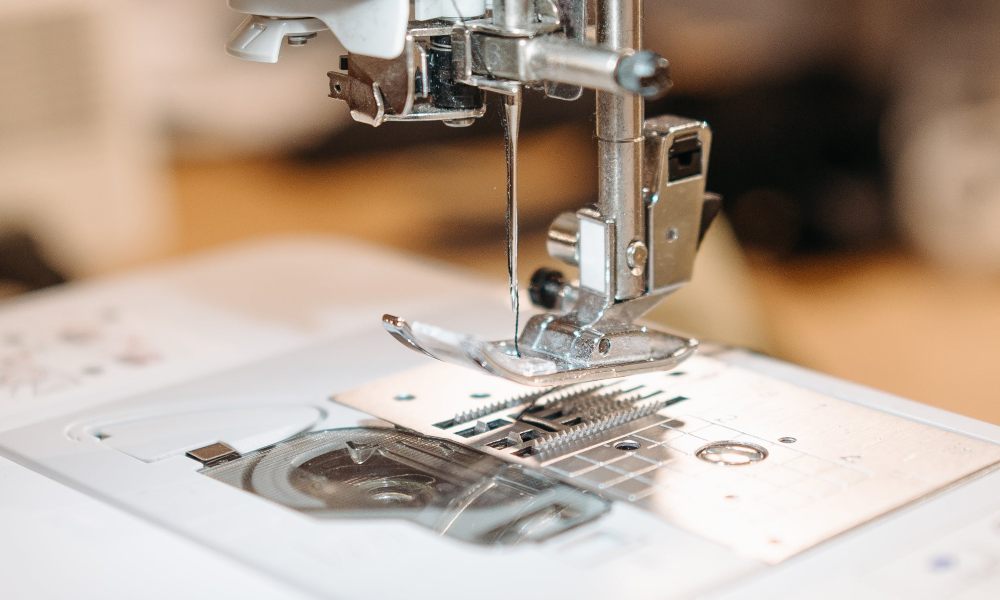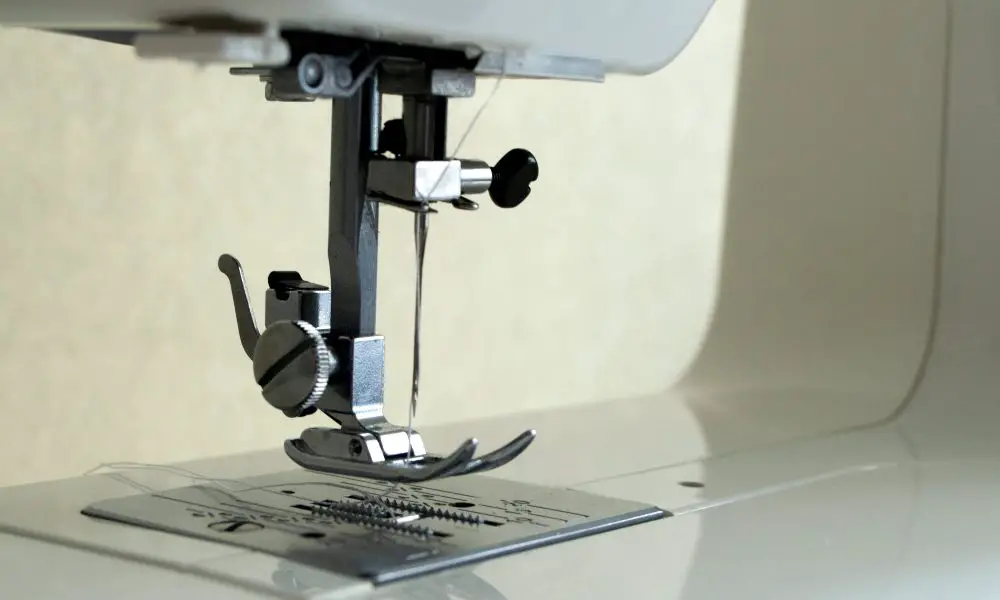Have you ever started sewing on your sewing machine only to find that your needle won’t catch the bobbin thread no matter what you try? Dealing with a needle not picking up the bobbin thread from the bobbin area can be incredibly frustrating and make you want to give up sewing altogether! But don’t despair. This common sewing machine problem usually boils down to just a few key issues that troubleshooting can quickly fix.
Main Causes of Needle Not Catching Bobbin Thread
When your sewing machine needle isn’t catching the bobbin thread as it should, there are a handful of likely culprits to blame related to the threading, tension, needle condition, timing, and fabric challenges. Here are some common reasons behind a needle not picking up the bottom bobbin thread.
Improper Threading
One of the first things to check when dealing with skipped stitches from the needle not catching the thread is how both the top needle thread and bobbin thread are threaded. The upper thread starts from the spool pin, gets wrapped around tension disks, passes through the take-up lever and needle bar, and finally through the needle eye before reaching the fabric. It’s easy to thread the top needle thread through these areas improperly.
The bobbin thread has to be inserted correctly into the bobbin case, and then the bobbin casing in the bobbin area has to be inserted for release. Referring to the sewing machine manual’s threading diagrams and following them exactly can help avoid issues with the upper thread and bobbin.
Tension Problems
The tension balance between the pressed top needle thread and pulled bobbin thread is delicate. Whether you have a Janome, Singer, Brother, or other sewing machine brand, stitches get distorted if the thread tension needs to be corrected. The tension discs control the top thread tension, while the bobbin tension comes from the bobbin case.
A top needle thread that’s too tight prevents it from forming a proper loop for the bobbin thread to catch and interlock, causing skipped stitches. If the bobbin’s tension is not adequate, the lower thread pulls excessively, leading to the formation of tiny thread loops on the underside or backside of the fabric.
Adjusting tension with the tension discs can help sync the upper and lower threads. Sewing a test square on scrap fabric after each minor adjustment will show if tension is finally balanced with even, straight stitches.
Bent or Damaged Needle
Over time and use, sewing machine needles can get bent, blunted, or the needle tip damaged. Even a slightly bent needle can affect the needle’s ability to pierce fabric cleanly at the correct needle bar height and form the proper loop of top thread for the bobbin hook or rotary hook to catch.
A bent needle might grab the top thread initially but then start skipping stitches further into seams, creating frustrating thread breaks and loose threads hanging off the fabric.
Replacing the damaged needle with a fresh, undamaged one in the correct size and type for your fabric is an easy first step in troubleshooting skipped stitches. Make sure the flat side of the needle shaft faces toward the back and the needle is fully inserted.
Bobbin Case Issues

After repeated use, lint and thread fibers can slowly build up inside the bobbin case. This impedes the bobbin spool from spinning smoothly to release the bottom bobbin thread for stitches.
Take the bobbin case out of the bobbin area and use tweezers to carefully clean out any lint trapped around the tension spring or in other crevices that could hinder thread flow.
Also, check that the bobbin spool is correctly dropped into the bobbin case, not merely resting loosely on top of it. Inspect your bobbin case for visible damage, like cracks preventing proper bobbin thread release.
Timing Issues
The precise timing between the needle lowering down into the fabric and the rotating hook or rotary hook catching the top thread loop plays a massive role in perfect stitch formation.
If the hook timing gets thrown off even slightly, the hook will consistently miss grabbing the top thread loop entirely, causing frustrating skipped stitches and loose thread tails on the underside of your project.
Timing issues can happen after moving the hand wheel at the wrong time or if the machine gets bumped or jostled during sewing. Consulting your sewing machine manual on re-time the hook assembly for your make and model is advised.
In some cases of significant timing disruption, getting a professional sewing machine service technician to adjust timing may be required.
Fabric Challenges
Very stretchy fabrics like knits and slippery fabrics like satin or vinyl can pose unique challenges for proper stitch formation and the needle catching the bobbin thread correctly.
Stretchy knit fabric pulls on the stitches as sewing happens, increasing the chances of thread breaks, skipped stitches, and uneven tension. Use a stretch or jersey needle with a gentle zigzag stitch for best results with knits. The ballpoint tip is designed to slip between fabric fibers instead of piercing them.
Slippery fabrics like satin and vinyl can be tricky because the material slides around, causing the needle or presser foot to skate on the surface. This results in uneven stitches and potential needle deflection.
A sharp, pointed microtex needle keeps better penetration pressure for sewing slippery fabrics without skating around. Lowering stitch length and using a roller or Teflon foot also significantly improves the feeding of these fabrics for smoother sewing.
Solutions and Preventative Measures
To solve an immediate issue of the needle not picking up the bobbin thread as well as prevent future occurrences, here are some helpful tips:
- Clean out lint regularly from bobbin case and housing area
- Change the sewing machine needle every 6 hours of actual sewing time
- Check the threading of the top thread and bobbin carefully according to manual diagrams
- Have a professional sewing machine technician adjust the timing if needed
- Make minor adjustments to top thread tension up or down if stitching shows tension imbalance
- Consult manual for proper bobbin installation into bobbin case and correct case placement
- Use the correct needle size and type (like stretch needle) for your fabric
- Have the sewing machine professionally serviced yearly to keep everything adjusted properly
FAQs
What causes a sewing machine needle not to catch the bobbin thread?
The leading causes are improper threading, tension problems, a bent needle, lint in the bobbin case, timing issues, and challenges with stretchy or slippery fabrics.
How do I fix a needle that won’t pick up the bobbin thread?
First, re-thread the top thread and bobbin according to the manual. Check the needle for damage and change if needed—clean lint from the bobbin case. Adjust the thread tensions. Check timing. Use the right needle for your fabric.
Why does my needle keep missing the bobbin thread?
Usually, this happens when the top thread tension is too tight, the bobbin tension is too loose, the needle is bent, or the hook timing is off, causing the hook to miss the thread loop.
How do I know if my sewing machine timing is off?
Symptoms of lousy timing are skipped stitches, broken threads, uneven stitch length, and loose thread loops on the underside of the fabric. Consult your manual for how to check the timing for your model.
Why won’t my needle catch the bobbin thread with knits?
Knit fabrics stretch during sewing, which can cause skipped stitches. Use a stretch needle so the point slips between fibers. Also, adjust the tension and use a zigzag stitch.
Conclusion
Dealing with a sewing machine needle that won’t reliably catch the bobbin thread can make you feel like giving up on your whole project before you start stitching. But in most cases, the fix is quick and straightforward. By methodically checking the top and bobbin threading, tension settings, needle quality, timing, and fabric type, you can get your machine happily stitching again in no time!
Does your machine sometimes act up with the needle failing to catch the bobbin thread no matter what you try? Please share your experiences and what helped you finally solve it in the comments!
***
Main image: pexels




